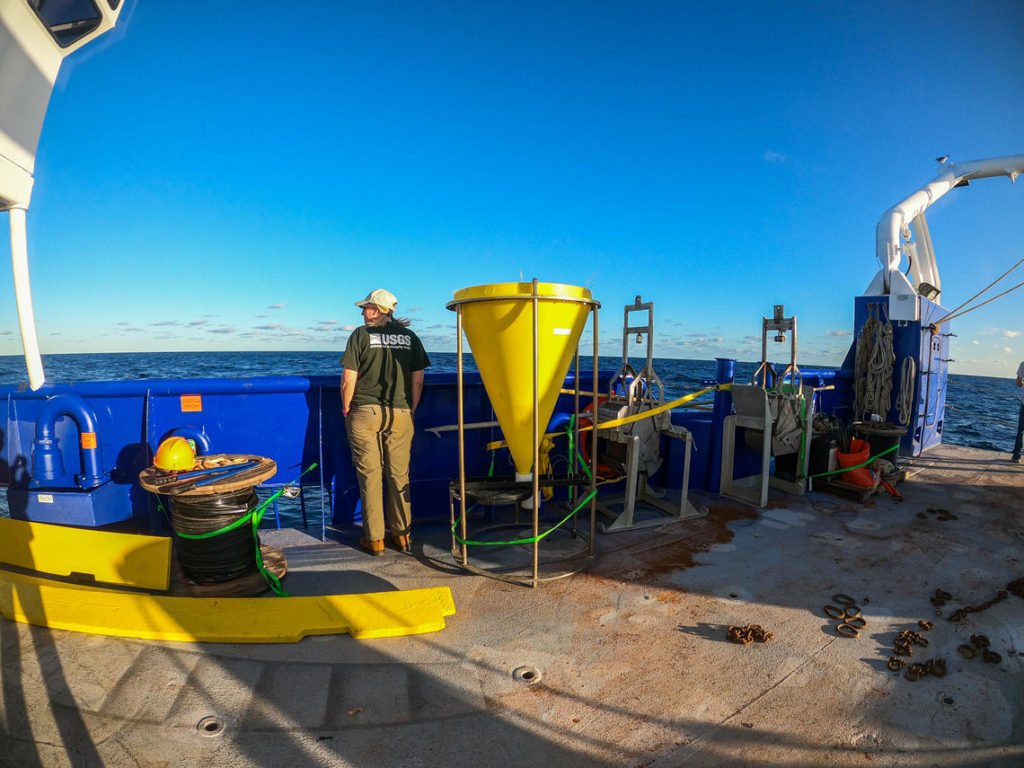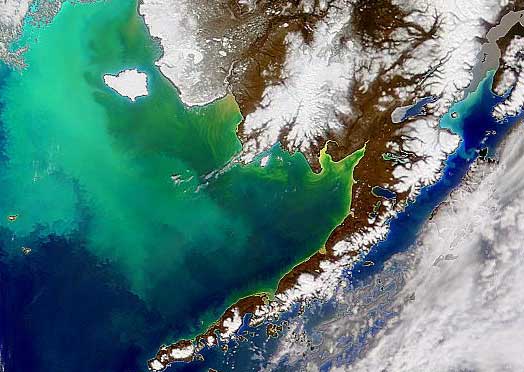Paper: Microbial dynamics of elevated carbon flux in the open ocean’s abyss
Authors: Kirsten Poff, Andy Leu, John Eppley, David Karl and Edward DeLong
Cells from blooms of phytoplankton, or tiny plants, can enhance carbon flux all the way down to the deepest parts of the ocean. The authors of this recent study measured the amount of carbon in sinking particles deep in the ocean at a station near Hawaii. Over the course of three years, scientists identified three time periods of unusually high carbon flux, or transport, at this depth, and found that the organisms that made up the sinking particles were significantly different between high flux events and the rest of the time period. The data showed higher abundances of surface-dwelling microorganisms, including phytoplankton, contributing to these particles during high-flux events.
Why is carbon flux or transport important and how does it happen? Known as the “biological carbon pump,” the transport of carbon from the surface ocean to the deep ocean is an important part of the global carbon cycle. This process occurs when phytoplankton take up carbon dioxide from the water and turn that into plant matter through the process of photosynthesis. When phytoplankton die, their cells can then sink to the deep ocean and carry that carbon with them. Because the surface ocean and atmosphere exchange gases, removal of carbon dioxide from surface waters causes carbon dioxide from the atmosphere to enter the ocean and thus reduces the amount of greenhouse gases in our atmosphere.
In this study, the authors deployed sequencing sediment traps, like the one seen in the photo below, at 4000 meters deep. These traps use a cone to collect sinking particles into cups. Each trap has multiple cups, and the cups rotate every 10 to 20 days. This allows scientists to identify how the makeup of sinking particles varies over time, rather than getting a sample at just one moment.

The authors used multiple tools to determine which organisms were responsible for driving periods of high carbon flux. They analyzed metagenomic data, which identifies the genes present in the samples and indicates what types of organisms are present. To complement the metagenomic data, the authors used transcriptomic data, which looks at what genes are activated and being used within the community to determine which organisms are the most active. Combining the two techniques allowed the authors to estimate the relative amounts of different organisms within the samples.
During the high carbon flux periods, genes related to using light for energy were prevalent in the collected particles. This means—because there is only ample light in the top 100 meters of the ocean—that particles during high-flux periods were dominated by organisms that live at the surface. This may be due to phytoplankton blooms creating an abundance of particles, which then stick together and sink through the ocean at faster rates compared to other times of the year. However, surface-dwellers include not only phytoplankton, but also bacteria that rely on sunlight for energy. In comparison, there were fewer genes related to using light for energy during the lower carbon flux time periods, indicating that the collected particles were dominated by organisms not originating from the surface, but perhaps colonizing the particles as they were sinking. The data also suggests that sporadic contributions from larger organisms, such as pteropods (small mollusks), are more important during periods with lower carbon flux.
This study showed that phytoplankton are driving periods of high carbon flux in the deep ocean and that the makeup of deep ocean sinking particles varies over time. Although the organisms discussed here are small, they have a disproportionately large role in global carbon cycling through their contributions to the biological carbon pump.
Tiny organisms’ race to the bottom of the ocean by Lillian Henderson is licensed under a Creative Commons Attribution 4.0 International License.

